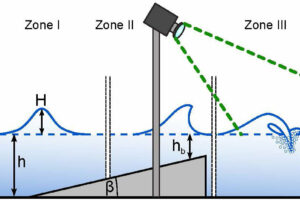A solar-powered car said to be the first in the world capable of driving off-road over long distances without recharging has completed a 620-mile (1,000km) test drive across Morocco and the Sahara.
The two-seat Stella Terra, designed by students at the Eindhoven University of Technology, completed the journey across a variety of challenging landscapes as part of a final test of its lightweight frame and aerodynamic profile.
The car, which runs off the energy provided by multiple solar panels on its roof, has a top speed of 90mph (145kmph), weighs only 1,200kg (1.2 tonnes) and has a range of at least 440 miles (710km) on a sunny day.
Wisse Bos, team manager of Solar Team Eindhoven, said the technology used, complementing a lightweight frame with highly efficient solar panels, was a decade ahead of anything on the market.
He said: “Stella Terra must withstand the harsh conditions of off-roading while remaining efficient and light enough to be powered by the sun. That is why we had to design almost everything for Stella Terra ourselves, from the suspension to the inverters for the solar panels. We are pushing the boundaries of technology.”
The car contains a rechargeable lithium (Li)-ion battery, which would also allow it to operate in less sunny climates but over shorter distances. Such is the level of energy provided by the solar panels on the car that it can provide sufficient electricity for cooking and charging devices such as a phone or camera.
Aged between 21 and 25, the 22 students behind the car brought the project to life after taking a year off from their studies.
The steering system on the olive-green car failed during the week-and-a-half-long experiment in the dry and varied landscapes of north Africa, from Tangier to the Sahara, but it was swiftly put right, according to Bob van Ginkel, 24, the project’s technical manager.
He said: “We hope this can be an inspiration to car manufacturers such as Land Rover and BMW to make it a more sustainable industry. The car was actually very comfortable in the off-road conditions as it is very light and does not get stuck.”
The car’s bespoke converter for the solar panels was found to be 97% efficient in turning sunlight absorbed by their PV cells into electrical charge. Stella Terra was found to be a third more efficient than had been originally envisioned.
Britt van Hulst, 21, the project’s finance manager, said there remained further work to do before the design could go to market but that it offered an avenue for large automobile manufacturers to explore.
The largest challenge for designers seeking to build solar-powered cars is the limited surface area on which to locate panels. Highly efficient panels able to generate sufficient energy to power vehicles over a long distance are expensive to produce. The most efficient panels on the market generally reach about 45% efficiency, while most panels are about 15% to 20% efficient.
The Stella Terra team is not for profit and had relied on sponsors for its budget. A spokesperson said it was not able to provide a total cost for the project.
The manufacturing cost appears to have been an inhibiting factor in the latest attempt to break into the automotive market by Atlas Technologies, a subsidiary of the Netherlands-based Lightyear. The company was intending last year to produce solar-electric cars, which had been due to retail at €500,000, but the firm announced its bankruptcy after a lack of orders. The company has since reemerged with a new model that would cost $40,000 a vehicle and be able to travel about 500 miles between charges.
Source : The Guardian











Add Comment